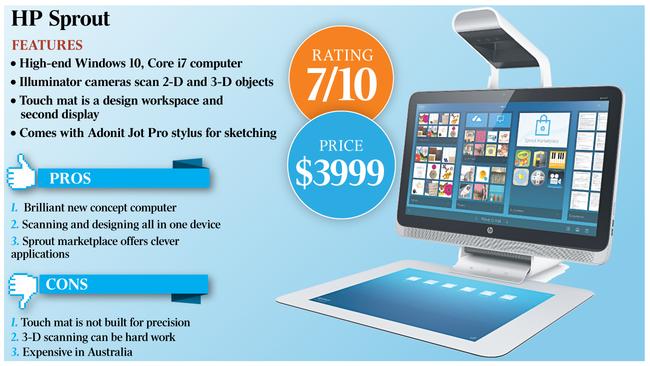Review: HP Sprout blends computer and scanner in single unit
The HP Sprout computer has a revolutionary projector that converts a mat into myriad fun and useful tools.
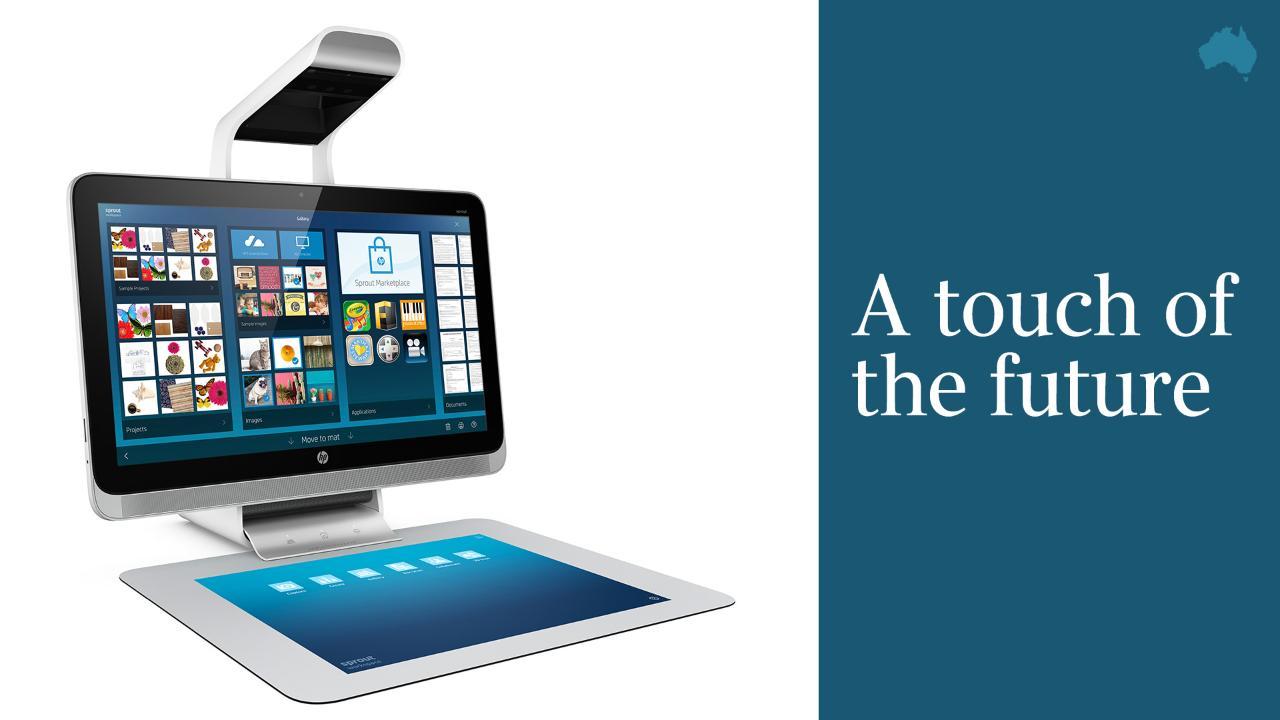
The HP Sprout looks like it’s from a parallel universe, and with its tower-like illuminator and 20-point touch mat, it’s refreshing to see a device that’s incredibly imaginative and isn’t afraid to mix things up.
In my week with the Sprout, I learnt a lot about what is can do. It captured the curiosity of almost everyone who passed my desk here at The Australian.
At its core, the Sprout is a powerful high-end Windows 10 all-in-one with a Core i7 processor. It’s what HP adds that makes it incredibly interesting.
There’s the illuminator, which sits above the screen. It houses a projector, a high resolution 14.6 megapixel camera, and an Intel RealSense 3D camera. You can scan 2D and 3D objects and documents.
Then there’s the 20-point touch-enabled mat. Whatever you place on the touch mat can be scanned to the library on the display, porting it from the real world to a virtual one.
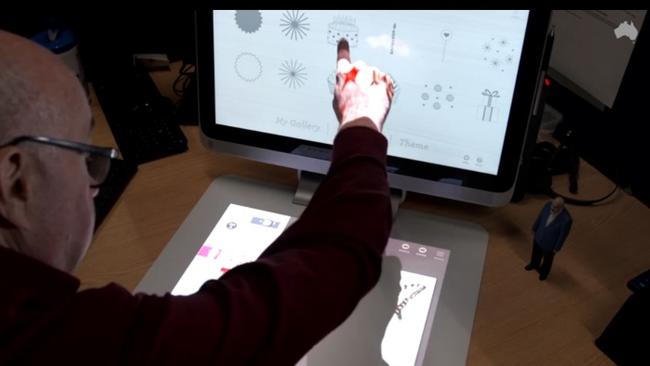
The mat is also a projector screen, displaying whatever the illuminator beams to it. It can morph from a QWERTY keyboard into, say, a piano keyboard, depending what app you run.
Suddenly the space in front of my desktop that’s usually a hardware keyboard could be whatever I wanted it to be. It needs a bit of fine-tuning but it’s still a clever concept that deserves praise.
The Windows 10 operating system considers the touchmat to be a second display and I used it as such. I could open a browser on the mat and scroll through websites, Facebook and Twitter feeds while performing other tasks on the main screen. You could also watch movies on the mat if you chose to.
The magic happens when you load the HP Sprout ecosystem. My main display became a repository of items I had scanned and a way to access the Sprout Marketplace. It has more than 20 special programs. The mat also turns into an app drawer for accessing them and a workspace.
I was able to tryout my DJ skills with Virtual DJ, which turns the main display into a DJ’s console. You get two turntables and a labyrinth of controls on the touch mat and it was a treat to queue-up tracks and fade between them. The Sprout certainly would have a place at your 70s retro disco parties, if you have them.
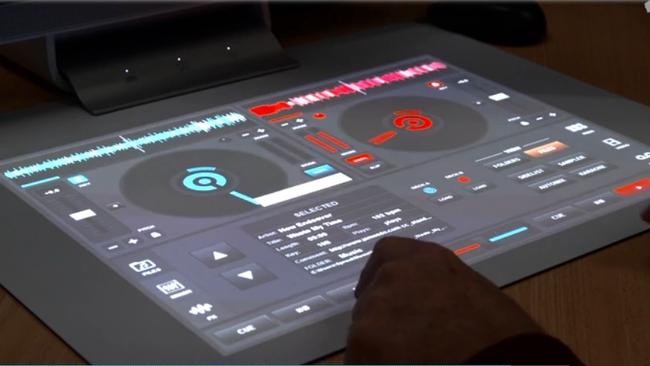
Then there was the piano app, which turns the Sprout into a pianola. The touch mat turns into a keyboard and I was able to tickle the ivories although my repertoire, sadly, was confined to Chopsticks and the first 4 bars of Fur Elise. With the mat’s 20 points of contact, two can play.
Still, in pianola mode you could let the piano do the work and singalong or enter reverse-pianola mode and record not only music but create the music score as well. I felt the Sprout would have been the envy of any classical-era composer.
Then there’s PowerDirector. Who would have thought it possible to edit a movie on a mat using drag-and-drop and your fingers. The Sprout does manage to make computing a primal, intuitive experience.
The core apps revolve around designing. I could flick objects from the screen on to the mat, resize and rearrange them, add text, change textures, and colour them in with my fingers. You could then print or 3D print them.
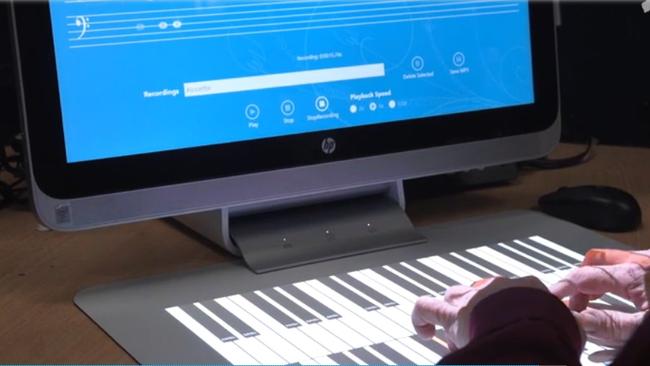
The idea of Sprout is that every design-oriented task can happen in one place, with no need for a separate scanner or a tablet. It does the lot.
While the Sprout is a clever idea, in the end, the mat is a projection, so the resolution isn’t that high: 1024x768 pixels. The Adonit Jot Pro stylus, while useful for sketching, isn’t really designed for precise artwork.
That renders the Sprout good for some things and not others. It’s more than adequate for making posters and cards at home and also useful for brewing up concept designs. There are people who use Sprout for designing clothing such as Melbourne designer Nixi Killick.

But for precise, professional work, you wouldn’t use the Sprout with the mat. You’d fire up Photoshop or Illustrator and use the Sprout as a conventional computer. With its high-end Core i7 processor, it’s capable of it.
I did lots of scanning in my time with the Sprout. 2D scanning of shallow objects worked fine but 3D scanning was laborious. I found that to scan say, a toy elephant involved 18 scans: six of the left side, six of the middle and six at the right.
You had to scan in a manner that let the Sprout add new chunks of the model adjacent to existing sections; otherwise you end up with a mess, as I occasionally did. Not all objects are suitable for scanning. The Sprout had difficulty with some textures and shiny objects, and with shapes where it couldn’t map sections together. But with care, and the right model, I could get good results.
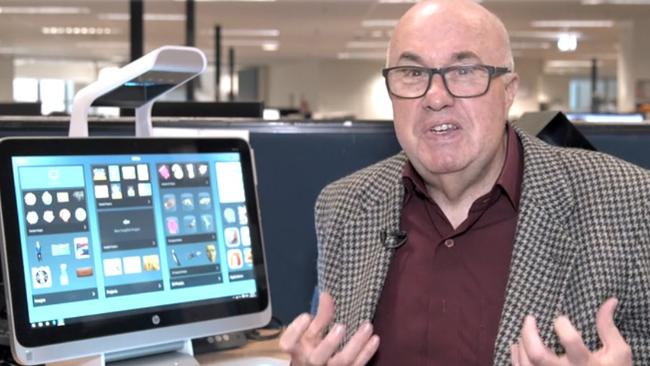
HP throws in a wireless keyboard and mouse, but as the touch mat is large, you might not fit both the keyboard and mat between you and the Sprout. Having a pullout drawer under the desk would be handy. I found the virtual keyboard projected on the mat too small for comfortable typing and HP should consider giving users a choice of sizes.
The Sprout sports a 4th generation Intel Core i7 processor, Nvidia graphics and a 1 Terabyte hybrid drive. It clocked 40.24 frames per second running the Cinebench 15 graphics test, while the CPU scored 715cb. The 23-inch display is 10-point touch-enabled.
The Sprout costs $US1899 in the US but in Australia it will set you back $3999. The price includes HP’s “white glove” product delivery and setup, and a one-year warranty. A 3D capture stage that you can use to speed-up the scanning process costs an extra $599.
The Sprout is expensive, but if you like the concept, the price may be worth it and your kids will love it.
Price: $3999
Rating: 7/10
